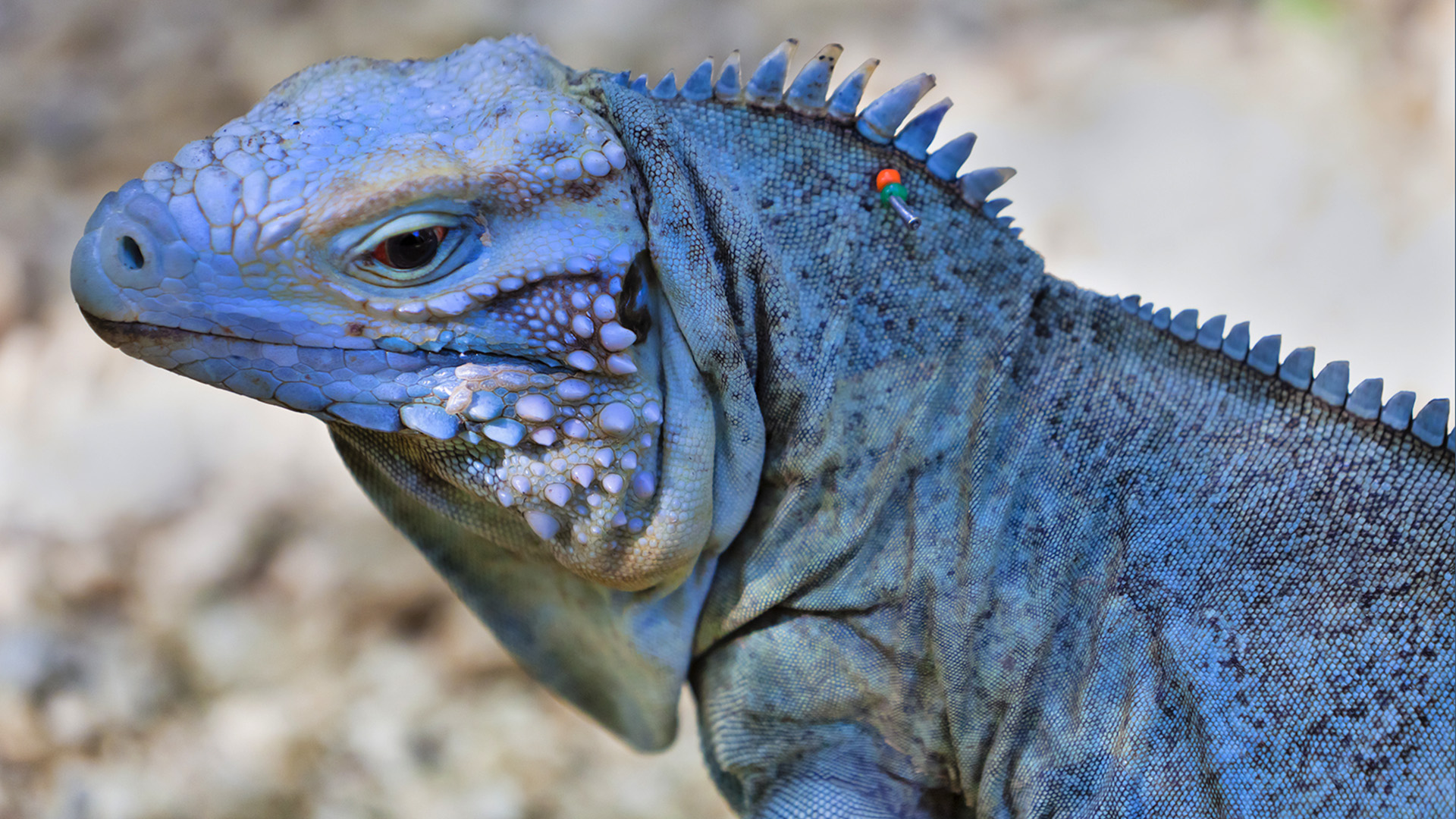For the 11 years that I have worked as a journalist in the Cayman Islands, I have followed the struggle to protect the blue iguana. I am not ashamed to say it was love at first sight.
The hues of the lizard’s blues, its spiky crest and distinctive black feet, and its curiously rich social behavior — all of this captivated me. When the first blue dragon turned its blood-red gaze on me, the outside world melted away.
“Since blue iguanas are cold blooded, people think they are cold-hearted,” Doug Bell, a former warden with the Blue Iguana Recovery Program (BIRP) of the Caymans, told me. “But in reality, they are full of passion.”
They are also constantly under threat. The blue iguana only exists in Grand Cayman, the largest of three islands in a tiny British territory some 150 miles south of Cuba. Related to the rock iguana species, it developed its blue skin over two million years and had no natural predators until humans settled the island in the 17th century, bringing with them free-roaming, lizard-hunting dogs and cats.
These, along with other stressors, had brought the blue iguana to the brink of extinction by the early 1990s.
The good news is that this year the blue iguana population is back to within striking distance of a healthy, sustainable size. Just 14 years ago, after more than a decade of conservation effort, the wild population of blue iguanas had dwindled to just two-dozen or so individuals. Today, that number is approaching 1,000 and visitors can now frequently spot the blue dragons scurrying across the footpaths of the Cayman Islands’ protected parks and gardens.
Last year, I became the first journalist to accompany BIRP researchers and volunteers on their annual trek into the rugged preserve at the eastern end of Grand Cayman, where new adult, captive-bred lizards are released into the wild to augment the recovering population. Whether the program’s success can be sustained amid persistent and growing threats — from pets and poachers to traffic, habitat loss, urban development and even invasive green iguanas — remains to be seen. But it is clear that full recovery of the blue iguana will depend greatly on the science and quiet sacrifice of BIRP and its collaborators, who work with little in the way of recognition or compensation.
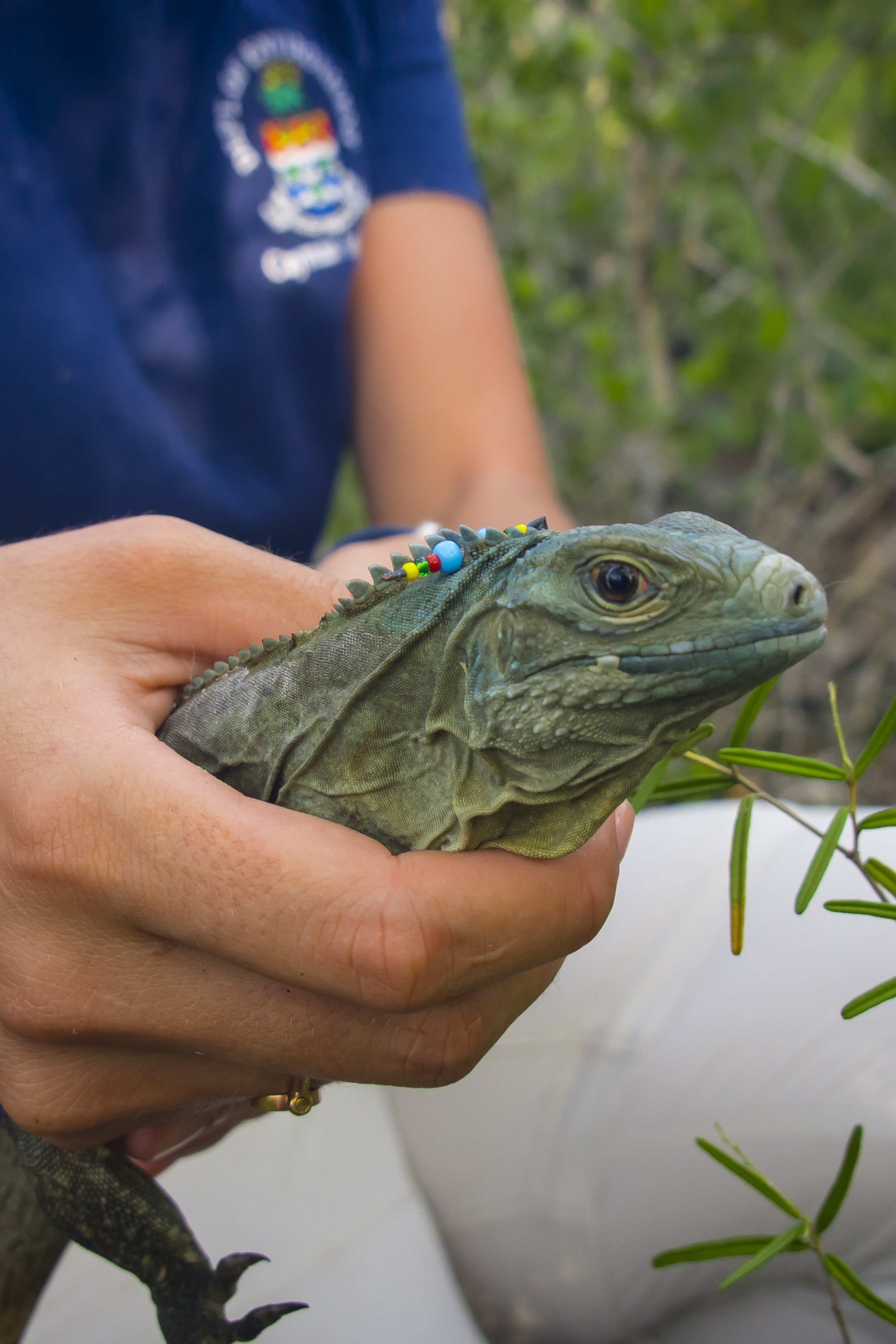
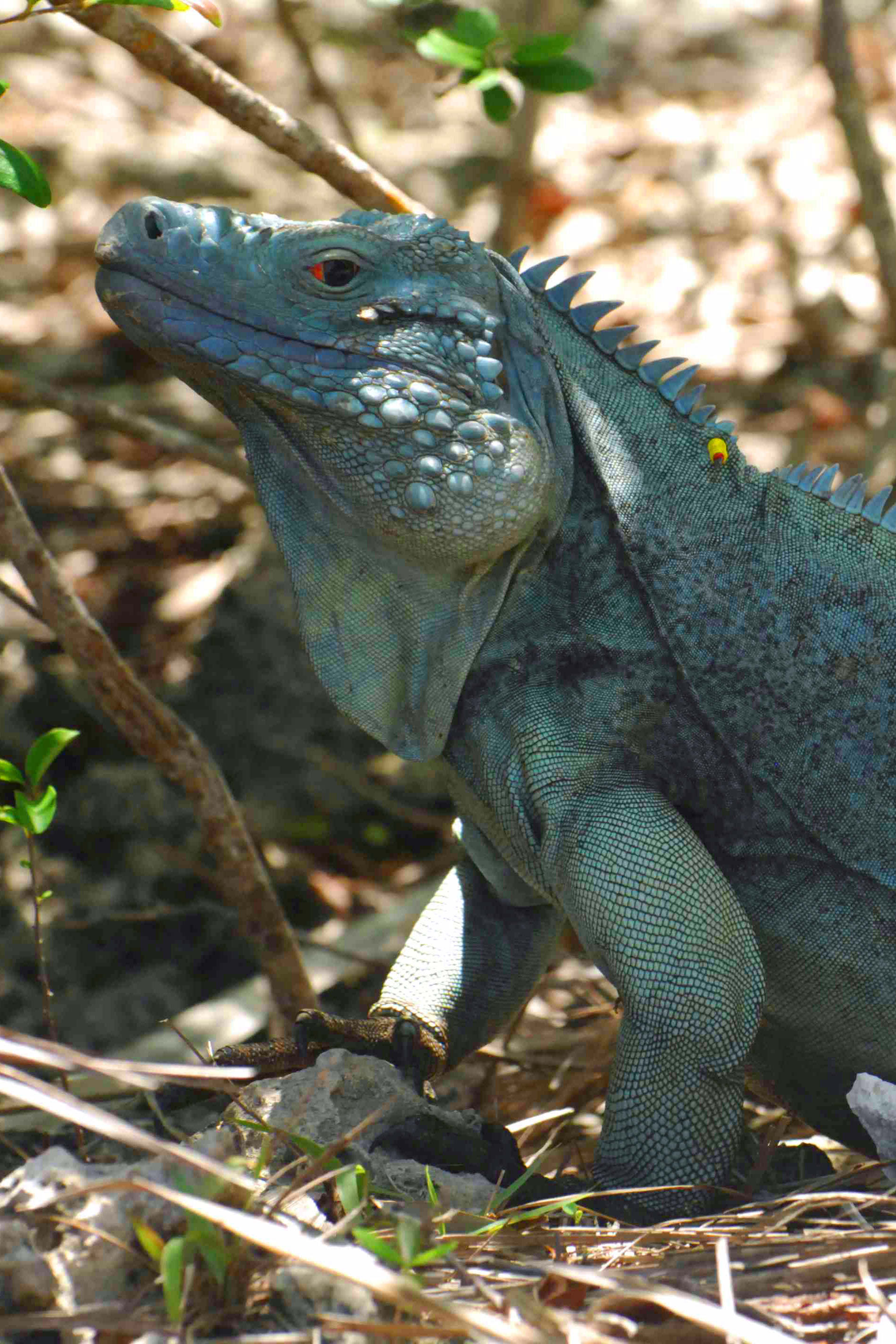
The dash to save the iguana began in the early 1990s, when just a few wild individuals remained in the Caymans. Researchers knew that only 20 unrelated lizards, capable of capturing 97 percent of the genetic diversity of a regional population, would be needed to save the species. So a group of local and international volunteers started beating the bushes — quite literally in some cases.
Some specimens were found as pets in the yards of private homes. Others were found in international zoos. But when all was said and done, 21 unrelated animals were found.
The blues were paired up and elaborate diagrams were developed to keep track of relationships and to maximize genetic diversity. The island’s current population of roughly 1,000 nominally wild blue iguanas grew out of those 21 forebears, and each year volunteers add roughly 50 new captive-bred adults to the mix.
“We began by guessing incubation temperatures and guessing what they might eat,” said Fred Burton, who resigned his government job in 2002 to run the blue iguana program full time as a volunteer. “The key thing was letting enough animals go in numbers, so we could study their behavior. Then they could teach us what they need, what they preferred habitat-wise, what they needed to eat, where they liked to nest, how much space they needed. It was a scary kind of strategy, because we had started releasing animals before we started breeding large numbers in captivity. But I figured we needed to learn about these animals and we weren’t learning about them in cages.”
Burton first encountered a blue iguana while he was researching the yellow fever mosquito in 1987. Looking back, he says he was both moved by the animal’s beauty, and compelled to act by its vanishingly small population.
“I saw this red eye gazing at me from a dark gloomy part of the island and there was this scaly blue head around it and I thought, what the heck is that? I had no idea that animals like that even existed.”
They probably wouldn’t today had Burton and others not begun to intervene.
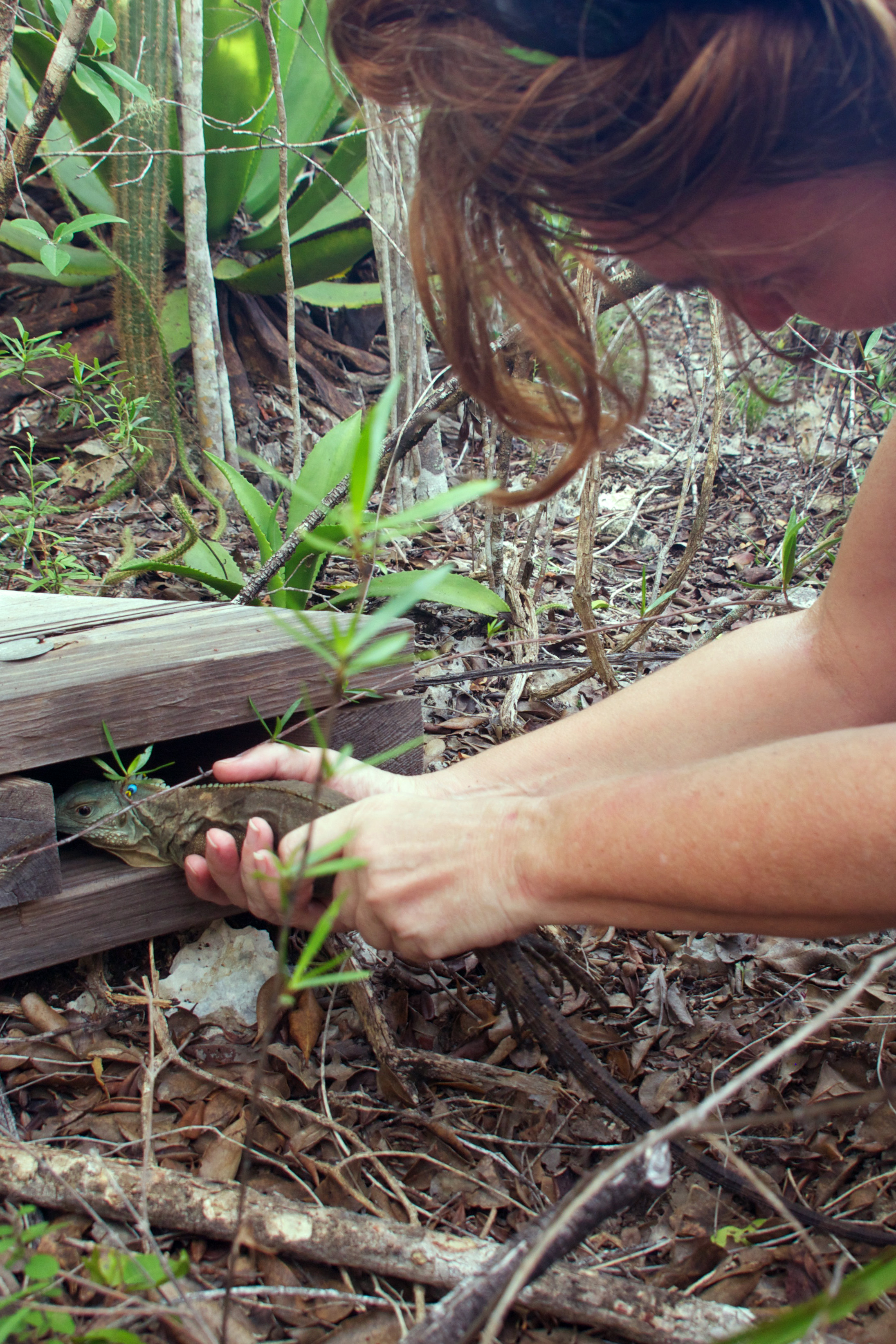
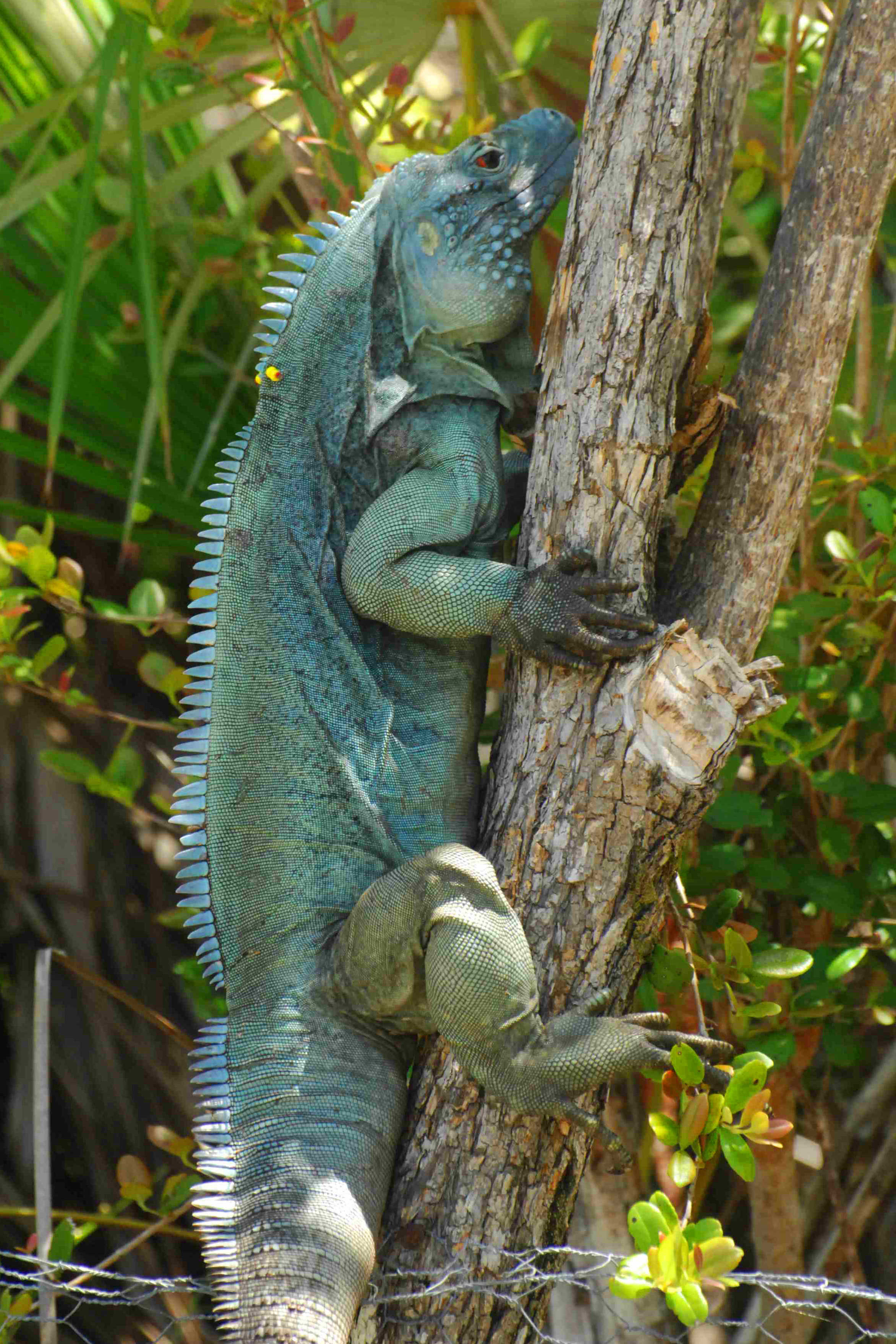
Armed with new adult iguanas, the volunteers enter the preserve just before dusk, searching by GPS for the custom-built wooden boxes, known as retreats, that they have placed at specific points in the untamed bush. The retreats are made to resemble the dark tunnels and crevasses that the lizards favor in the wild, and these captive-bred newcomers will often cling to them for days, even months, before leaving them permanently to establish a territorial foothold elsewhere on the island.
The precise locations of the retreats are a well-guarded secret – a protection against poachers.
With the light of day fading during my visit, the volunteers split into two groups. I went off-trail with a local researcher and we were quickly swallowed up by the vegetation as we approached the site of a retreat. The researcher removed the palm leaves from the box’s entrance — placed there to keep the other animals out — and then gently pulled an impressive blue iguana out of a canvas bag.
The new releases are outfitted, at the crest on backs of their necks, with four or five colored beads. They are arranged in an order unique to each individual — a means to visually identify the iguanas. The bead arrangements are kept in a database along with each individual’s birth date, gender, and other details.
After some coaching on proper handling, the researcher handed a beaded blue dragon to me.
I held its torso below the neck with its front legs tucked under its body, while my other hand lightly gripped at the abdomen. Holding it, my guide said, gave the startled, exquisite animal time to calm down. Its skin was dry to the touch and rougher than I imagined, but it didn’t matter. For just a moment, I forgot that I was a journalist and I simply marveled at the raw beauty of this species, and the silent testimony it offered, there in my hands, to the power of conservation.
When I leaned close to the opening of the retreat, the iguana licked the wooden edges of the entrance, getting a sense of it. I guided its head into the opening and let it go. It took a few steps, paused, and then disappeared.
Later, as I drove out of the reserve, still absorbed with my thoughts, I noticed a Ford pickup truck parked just off the road. There was a German Shepherd-mix dog in the bed of the truck. Unchained and unsupervised, it was only a short trot away from the wooden retreat where, just a couple hours before, I’d helped to add one more blue iguana to the wilds of Grand Cayman.
“We have shown the world that here is another species that doesn’t have to go instinct. It’s very successful and it’s replicable,” said Burton. “But we are going to have to start fencing in these protected areas.”
Shurna DeCou is a freelance writer and photographer whose work from the Cayman Islands has appeared in a variety of publications and news services, including Reuters, the BBC, The Miami Herald, and The New York Times.










